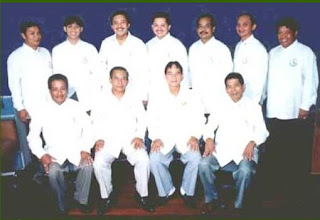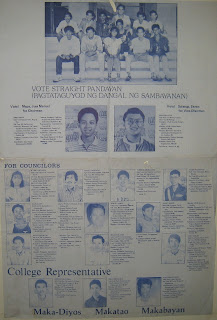Composition
Excerpts from the Executive Order No. 98-02 dated October 5, 1998 issued by Municipal Mayor Rodolfo G. Villar entitled Approving and Directing the Implementation of the Municipal Government's Aksyon ng Bayan Rosario 2001 AB describes the composition of the operational network that matters most in the implementation of the program. For the Pangkats:
Each barangay was divided, depending on its population or land area, into 3-7 Puroks or Sitios headed by a Barangay Kagawad/Purok Leader.
Each Purok or Sitio is then organized into Pangkats consisting of an average of 10-15 Families, which are represented by their respective Heads of Families.
Each Pangkat is headed by a Pangkat Leader chosen by the Pangkat Members from among themselves. The clustering of families depends on the number of houses and their proximity to each other.
Function
Under the Aksyon ng Bayan Rosario 2001 AB Program, the Pangkats has the following functions:
- Identify the needs, problems and resources of the pangkats, puroks and barangays.
- Communicate the needs, problems and recommendations to the Barangay Development Council through the Barangay Development Network.
- Assist in the implementation, monitoring and evaluation of programs, projects and activities under the Aksyon ng Bayan Rosario 2001 AB Program in their respective Pangkats or wards.
Innovation
The Pangkats is an innovation with the goal of empowering more people in the community to assume a leadership position whilst not being too much entangled with partisan politics.
The insight here is that the Pangkat Leader is not an elected barangay official and he or she is not subject to the rigors of an election campaign and thus have more flexibility in making decisions affecting his or her ward.
In effect, we are creating an opportunity for training in a career path preparatory to either the position of future Barangay Kagawad, a Punong Barangay, Sangguniang Bayan Member, or even a Vice Mayor or Municipal Mayor, and beyond.
Paradigm Shift
This goal largely depends on the extent to which the program has penetrated the minds and hearts of the people for a new way of doing things: experience a paradigm shift.
Therefore, the Aksyon ng Bayan Rosario 2001 AB Program is also an attempt to provide alternative means of becoming an elected local government personality rooted in the ideals of people empowerment, aware of minimum basic needs framework, conscious of ecological security, and sensitive to gender and development.
It is thus a preliminary step away from costly patronage politics that has been entrench for decades in local politics. I reckon that if ever the seed of an idea planted between 1995-2005 took roots, suggesting that there will be an impact of what we did , it may take about 5-10 years to bear fruit and observe a clear indication of dividend yield.
In some areas, a period of as short as 3-5 years may already produce a Sangguniang Barangay Kagawad or a Punumbarangay from the ranks of the Pangkat Leaders.
RELATED POSTS:








